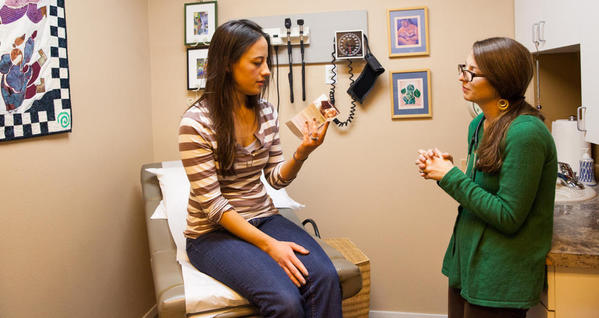An engaging, multimedia training series on healthcare and domestic violence eligible for 3.25 free CME/CEs is now available online!
The title of the training series is
“Domestic and Sexual Violence (DV/SV), The Impact on Health, and the Patient Safety Card Approach to Integrated Education, Assessment, and Response.”
This training, featuring internationally-recognized ACEs expert Dr. Linda Chamberlain and staff from the Alaska Native Medical Center, the Alaska Native Epidemiology Center, and the Alaska Network on Domestic Violence and Sexual Assault, teaches about:
- the health effects of DV/SV and reproductive coercion throughout the life course (including the neurobiology and physiology of toxic stress on children’s development)
- how to create a safe environment for patients (adolescent and adult) in which to address DV/SV and reproductive coercion
- how to use the evidence-based and culturally-adapted safety card approach for integrated education, screening, and response
- how to respond to patients experiencing abuse in a trauma-informed way: with support, responsive healthcare, harm reduction, and effective referrals
The trainings and the evidence-based, culturally-adapted materials can be accessed at the webpage: www.anthctoday.org/epicenter/healthyfamilies/
(Scroll to near the bottom of the page)
Or, to view the videos on YouTube, visit the training playlist: www.youtube.com/playlist?list=PL7sWaQUs1g5YZHHX12OVaLptAb4AJ9EyB
Background on the approach of this training and what it has to do with ACEs:
Those of us who work to prevent ACEs and the long-term ill effects of ACEs aim to go as far “upstream” as possible rather than continuing the more common approach of attending only to the “downstream” consequences of ACEs, such as incarceration and disease, etc. We know this includes not only concentrating on infants and children, but also on the adolescents and adults who become parents—preferably before they become parents, as well as during pregnancy, birth, and early life.
There are many settings in which these multi-age approaches to ACEs prevention and healing can take place, and one important setting is healthcare. The approach I have been concentrating on for the past few years is how to improve the way health care systems address domestic violence, sexual violence, and reproductive coercion. While one could argue that these forms of abuse are “downstream” effects of ACEs, we also know that they contribute to ACEs for children exposed. In fact, these forms of abuse increase the risk of coerced and unwanted pregnancies, toxic stress in the prenatal environment, unhealthy stress coping mechanisms during pregnancy such as tobacco and alcohol use, and pre-term birth, among other negative consequences. Women who experience abuse prenatally are also at greater risk for postpartum depression, lower rates of breastfeeding, and poor maternal attachment. Exposure to domestic violence can have significant effects on child illness, injury, behavioral health problems, learning disorders, and obesity, and is an ACE that is highly predictive of other ACEs. Therefore, effectively addressing DV/SV and reproductive coercion and integrating education about healthy relationships into health care with adults and adolescents creates opportunities to prevent ACEs at preconception, prenatally, in infancy, and in childhood.
Common approaches to domestic violence in health care concentrate on screening, primarily screening for physical violence and/or the “Are you safe at home?” approach. Research has shown that screening alone does not yield high disclosure rates and does not change abuse or health outcomes. What does help create better outcomes is when screening is linked with effective education and intervention, such as with the patient safety card approach.
This training series draws on the research of Dr. Elizabeth Miller and development of materials and trainings by Futures Without Violence, but also on the guidance and input of the hundreds of Alaskans of all racial and ethnic backgrounds, including a large number of Alaska Native people, who helped shape the culturally and locally appropriate safety cards (which you can see and order at www.anthctoday.org/epicenter/healthyfamilies/).
You might also want to read the ACEs Connection article about the safety cards here for more background.
If you have questions, please contact me at ldavellanedacruz@anthc.org







Comments (0)